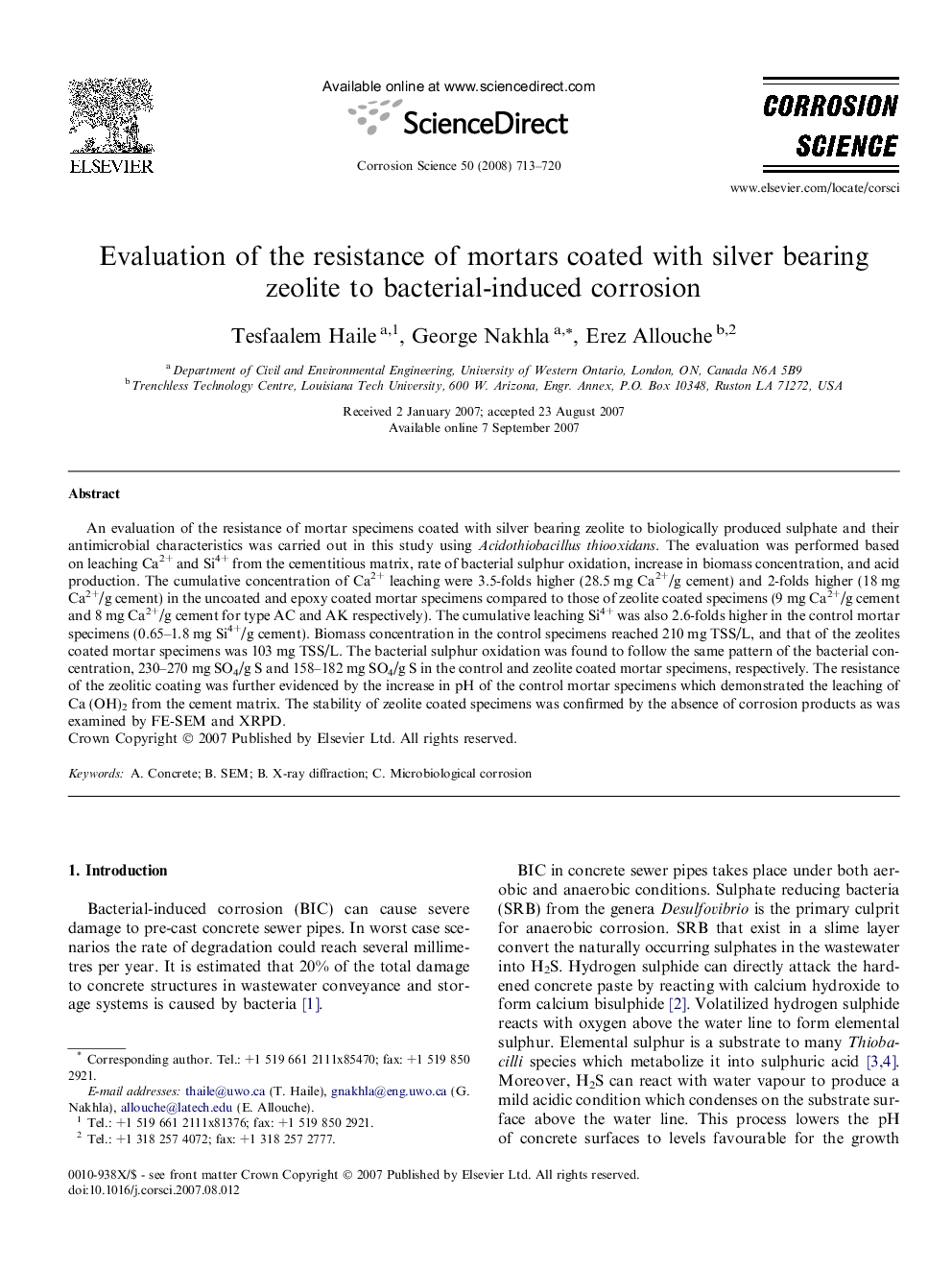| Article ID | Journal | Published Year | Pages | File Type |
|---|---|---|---|---|
| 1471320 | Corrosion Science | 2008 | 8 Pages |
An evaluation of the resistance of mortar specimens coated with silver bearing zeolite to biologically produced sulphate and their antimicrobial characteristics was carried out in this study using Acidothiobacillus thiooxidans. The evaluation was performed based on leaching Ca2+ and Si4+ from the cementitious matrix, rate of bacterial sulphur oxidation, increase in biomass concentration, and acid production. The cumulative concentration of Ca2+ leaching were 3.5-folds higher (28.5 mg Ca2+/g cement) and 2-folds higher (18 mg Ca2+/g cement) in the uncoated and epoxy coated mortar specimens compared to those of zeolite coated specimens (9 mg Ca2+/g cement and 8 mg Ca2+/g cement for type AC and AK respectively). The cumulative leaching Si4+ was also 2.6-folds higher in the control mortar specimens (0.65–1.8 mg Si4+/g cement). Biomass concentration in the control specimens reached 210 mg TSS/L, and that of the zeolites coated mortar specimens was 103 mg TSS/L. The bacterial sulphur oxidation was found to follow the same pattern of the bacterial concentration, 230–270 mg SO4/g S and 158–182 mg SO4/g S in the control and zeolite coated mortar specimens, respectively. The resistance of the zeolitic coating was further evidenced by the increase in pH of the control mortar specimens which demonstrated the leaching of Ca (OH)2 from the cement matrix. The stability of zeolite coated specimens was confirmed by the absence of corrosion products as was examined by FE-SEM and XRPD.
